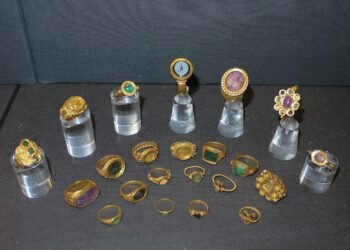A new study led by a CNRS researcher, published on October 17 in the journal PNAS, used zinc isotope analysis for the first time to determine the position of Neanderthals in the food chain. Their findings suggest that they were carnivores.

Were Neanderthals carnivores? Scientists have not y yet settled the question. While some studies of Iberian Peninsula dental tartar appear to show that they were major plant consumers, other research conducted at sites outside Iberia seem to suggest that they consumed almost nothing but meat.
Using new analytical techniques on a molar from an individual of this species, researchers discovered that the Neanderthals at the Gabasa site in Spain were carnivores.
Until now, scientists had to extract proteins and analyze the nitrogen isotopes present in bone collagen to determine an individual’s position in the food chain.
However, this method is often limited to temperate environments and can only be used on samples older than 50,000 years. When these conditions are not met, nitrogen isotope analysis becomes extremely difficult, if not impossible.
This was the case for the molar analyzed in this study from the Gabasa site.
Given these constraints, CNRS researcher Klevia Jaouen and her colleagues decided to analyze the zinc isotope ratios in tooth enamel, a mineral that is resistant to all forms of degradation.
This is the first time this method has been used to attempt to identify a Neanderthal’s diet. The lower the proportions of zinc isotopes in the bones, the more likely they are carnivore bones.
The study also included carnivores such as lynxes and wolves, and herbivores such as rabbits and chamois, from the same time period and geographical area. The findings show that the Neanderthal to whom this tooth from the Gabasa site belonged was probably a carnivore who did not consume their prey’s blood.
Broken bones discovered at the site, along with isotopic data, indicate that this individual ate the bone marrow of their prey without consuming the bones, while other chemical tracers indicate that they were weaned before the age of two. Analyses also show that this Neanderthal died in the same location where they had lived as a child.
When compared to previous techniques, this new zinc isotope analysis method makes distinguishing between omnivores and carnivores easier.
To confirm their conclusions, the scientists hope to repeat the experiment on individuals from other sites, especially the Payre site in southeast France, where new research is underway. — by CNRS
More information: Jaouen, Klervia, (2022). A Neandertal dietary conundrum: Insights provided by tooth enamel Zn isotopes from Gabasa, Spain, Proceedings of the National Academy of Sciences. DOI: 10.1073/pnas.2109315119. doi.org/10.1073/pnas.2109315119


























